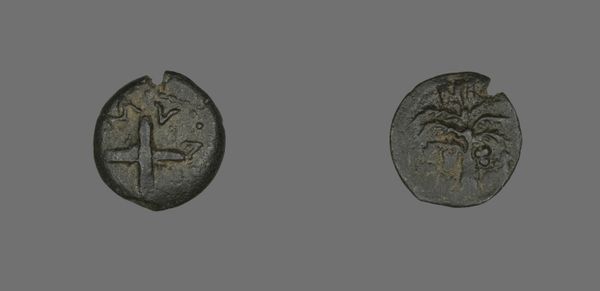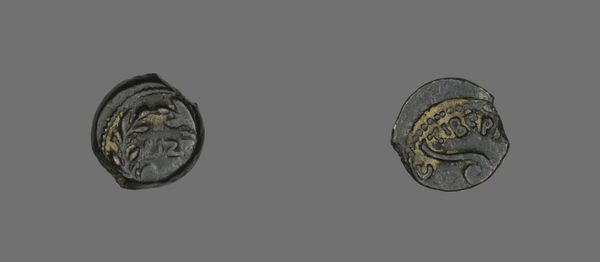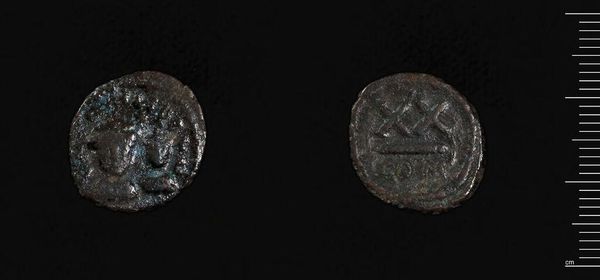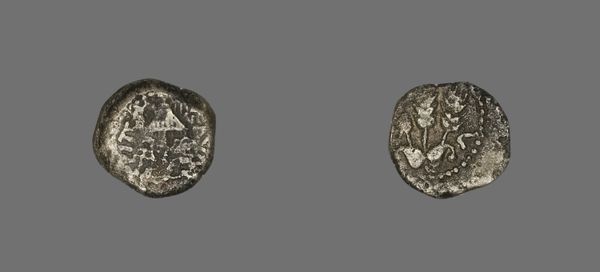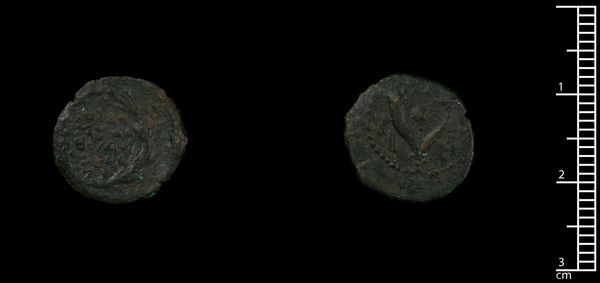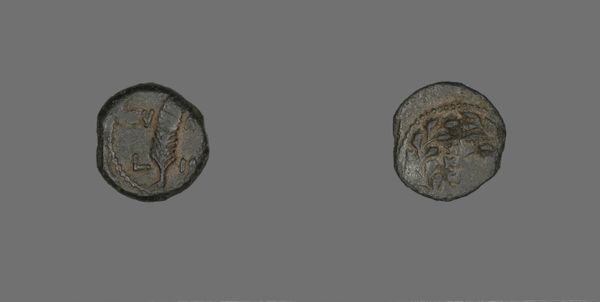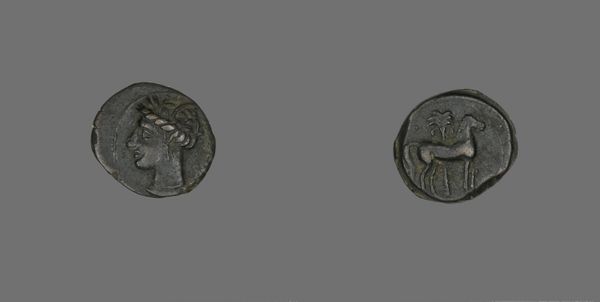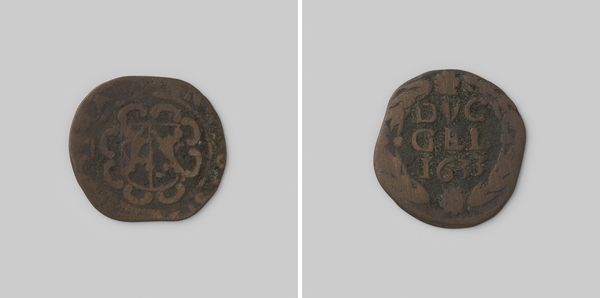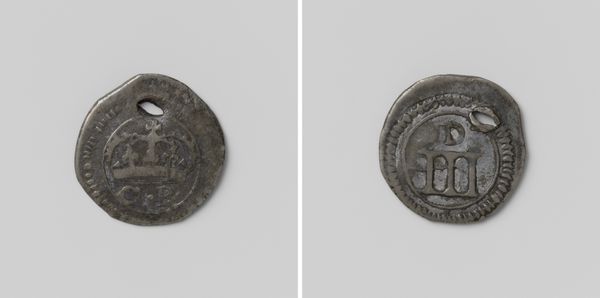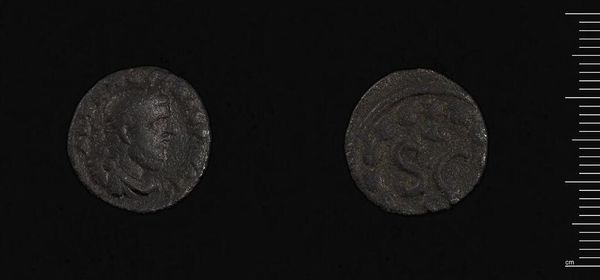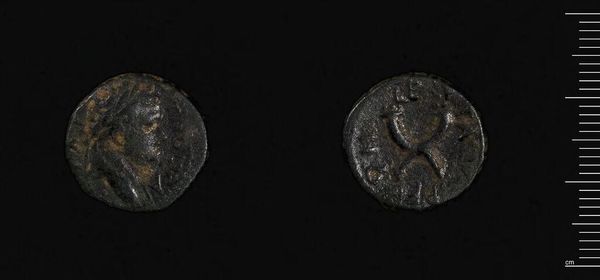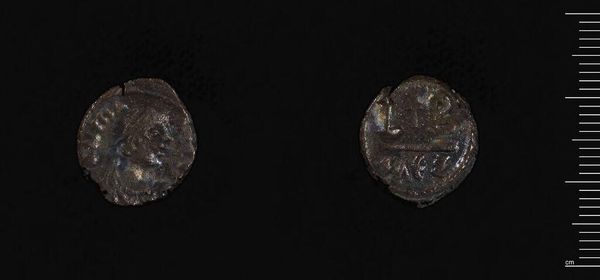
carving, metal, bronze
#
portrait
#
carving
#
metal
#
bronze
#
ancient-mediterranean
#
coin
Dimensions: Diam. 2 cm; 5.11 g
Copyright: Public Domain
Editor: Here we have an artifact titled "Coin Depicting a Bundle of Twigs" from around 136 CE. It's a small bronze coin from Judea currently housed at The Art Institute of Chicago. It has a worn texture and at first glance, I am fascinated by the incised markings which appear so meticulously applied, even at such a diminished scale. What details stand out for you in this piece? Curator: I'm struck by the relationship between the raised and incised forms. The bas-relief design is so economical. There is an impressive degree of spatial illusion given the constraints of the medium and the obvious wear across the surface. Note the subtle variations in line thickness, delineating the texture of the bundle and other motifs on display. How do these minute details contribute to the object's legibility? Editor: They give it a sense of depth despite its flat nature and contribute to a better understanding of form and shape overall. What is the correlation between form and function, if you had to say? Curator: The coin's form dictates its function. The circular shape lends itself well to distribution and durability. The engraved symbols must carry significant cultural weight for it to perform as currency. The symbolic message has to have been immediate, so as to operate economically in trade and also project authority through readily identified graphic devices. Do you agree? Editor: That’s a great insight. It truly reveals how this artwork functions on multiple levels. The use of semiotics certainly conveys meaning here in ancient Judea. Curator: Indeed. The power of symbols in simple, refined compositions!
Comments
No comments
Be the first to comment and join the conversation on the ultimate creative platform.
